Know why rain brings that fresh, earthy smell
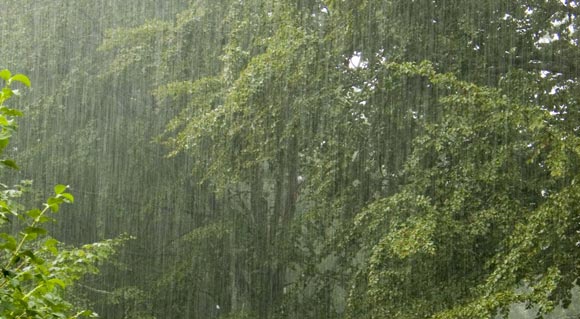
Washington, Jan 25 (IANS) Love the fresh and earthy smell of rain drops and curious to know where the smell comes from? Scientists have now identified the exact mechanism that releases this aroma into the environment.
Rain drops before hitting the ground have no smell but the moment they hit the ground and interact with dirt, the fresh and almost sweet fragrance comes out.
The smell is called "petrichor," that is derived from the Greek words "petra", meaning "stone", and "ichor", which refers to the fluid that flows like blood in the veins of the gods.
"They talked about oils emitted by plants, and certain chemicals from bacteria, that lead to this smell you get after rain following a long dry spell," said Cullen Buie, assistant professor of mechanical engineering at the Massachusetts Institute of Technology in Cambridge.
When a raindrop hits a porous surface it traps tiny pockets of air.
These bubbles speed upward before breaking the drop's surface and releasing microscopic particles, called aerosols, into the air.
Now, researchers think these aerosols carry the rainlike aroma.
The researchers observed the process with a system of high-speed cameras, reported LiveScience.
Depending on the speed of the droplet, and the properties of the soil, a cloud of hundreds of aerosol droplets might be dispersed in as little as a few microseconds.
The new research "brings the conversation of bubble-induced aerosol formation from the ocean over to the land," said James Bird, assistant professor of mechanical engineering at Boston University.
"This paper provides an elegant mechanism by which these microbes can be propelled past the stagnant layer of air around them to a place where the breeze can take them elsewhere," Bird concluded.
'Earth on track to warmest year on record'

Washington, Nov 21 (IANS) The globally averaged temperatures for October as well as the January-to-October period were both the highest on record since record keeping began in 1880, the US National Oceanic and Atmospheric Administration (NOAA) has said.
"Five of the past six months have been record warm for their respective months; July was fourth warmest," Xinhua quoted the NOAA as stating in a monthly report Thursday. adding that this year "is currently on track to be the warmest year on record".
According to the US agency, the combined average temperature over global land and ocean surfaces for October was 14.74 degrees Celsius, beating the previous record of 2003 by 0.01 degrees Celsius.
Warmer-than-average temperatures were evident over most of the global land surface, except for large parts of central Asia, it said.
"Record warmth was notable across a large area of southern South America, the US western coastal regions, far east Russia, parts of southern and southeastern Asia, much of southern and western Australia, and parts of southern Europe," said the NOAA.
Indian scientists find a 'wonder herb' in the high Himalayas
By Anjali Ojha
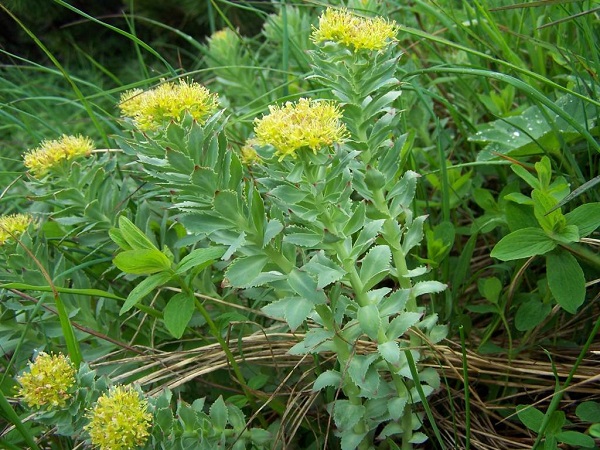
Leh, Aug 24 (IANS) In the high hostile peaks of the Himalayas where sustaining life is a challenge in itself, Indian scientists say they have found a "wonder herb" which can regulate the immune system, help adapt to the mountain environment and, above all, protect from radioactivity.
Rhodiola, a herb found in the cold and highland climate, has led India's leading scientists to wonder if it is the end to the quest for "Sanjeevani", the mythical herb that gave renewed life to Ram's brother Lakshman in the epic Ramayana.
Locally called 'Solo' in Ladakh, the qualities of Rhodiola were largely unknown so far. The leafy parts of the plant were used as vegetable by locals. However, research by the Leh-based Defence Institute of High Altitude Research (DIHAR) is exploring the therapeutic values of the herb that shows it can do wonders for the troops posted in difficult high altitude areas like the 5,400-metres-high Siachen glacier.
"Rhodiola is a wonder plant that has immunomodulatory (enhancing immune), adaptogenic (adapting to difficult climatic condition) and radio-protecting abilities due to presence of secondary metabolites and phytoactive compounds unique to the plant," R.B. Srivastava, Director, DIHAR, told IANS.
Srivastava said the herb can mitigate the effects of gamma radiation used in bombs in biochemical warfare.
"A concerted effort involving conservation, propagation and sustainable utilisation of this unique medicinal herb will surely result in rediscovery of Sanjeevani for the troops deployed in extreme climatic condition along Himalayan frontiers," said the director.
The Leh-based lab of the Defence Research and Development Organisation (DRDO), the world's highest agro-animal research laboratory, has been researching on this wonder plant for more than a decade.
"While its adaptogenic qualities can help the soldiers in adjusting to the low pressure-low oxygen environment, the plant has also been found to have anti-depressant and appetizer properties," said Srivastava.
In the barren glacier of Siachen where white is the only colour visible for miles, depression is a problem troops face. The high altitude and harsh climate also make them lose appetite.
DIHAR has already developed Herbal Adaptogenic Appetizer, and Herbal Adaptogenic Performance Enhancer that improves performance in extreme high altitude conditions, and has been highly appreciated by the Army.
Rhodiola is also found in other parts of the world with other countries like the US and China engaging in research on the wonder herb.
The plant has been used in traditional Chinese medicine to combat high-altitude sickness, while in Mongolia physicians prescribed it for tuberculosis and cancer.
Researchers in Russia studied its impact on athletes and later on cosmonauts.
Some other qualities the plant is found to be containing in studies across the world include fast recovery after heavy workout, memory enhancement, and cardiac stress reduction.
"Our research reveals its potential for anti-aging, tissue regeneration, protecting neurons during lack of oxygen, and cognitive improvement," said Sunil Hota, who is working on investigating medicinal properties of the plant at DIHAR.
O.P. Chaurasia, ethnobotanist with DIHAR for nearly two decades, told IANS that they have successfully established a field gene bank and Rhodiola plantation of nearly two acres in the premise of the laboratory.
"We are trying in-vitro propagation of the plant to increase its population," added Chaurasia.
(Anjali Ojha can be contacted at anjali.o@ians.in)
Selfless mothers the backbone of SOS Children's Village model
By Shilpa Raina

Faridabad (Haryana), June 18 (IANS) Every time eight-year-old Rishab (name changed) asks his "mother" how he came into this world, she replies that a fairy gifted him to her. But Sonia Yadav is actually waiting for him to grow up to reveal how he actually came into the world.
For Yadav, the foster mother of 10 children, it is extremely hard to find the opportune moment to tell her dearest child that his biological parents had abandoned him. What would be worse would be to tell him that eight years ago, he was found in a vegetable bag outside the gate of the SOS Village in Faribadad, an industrial city bordering the national capital.
"I will have to tell him the truth one day," Yadav, 43, told IANS.
"He is too young, but as he grows up he will hear stories of other children who too have been abandoned by their parents. So, it might be easy for him to take this information positively," she added.
Like Yadav, there are around 600 foster mothers in 33 SOS India villages spread across 21 Indian cities. Each of them have 8-10 children under their care and together they become a family where the foster mother is the head and the children become siblings.
Philanthropist Hermann Gmeiner founded the SOS Children's Village in his native Austria in 1949 to provide "secure families" to homeless children post the World War II. It now has a presence in 133 countries.
It was first established in India in 1964 and has linkages with Child Welfare Committees in various states, specialising in taking care of new-borns. If the strength of SOS model lies in its "family-based" care model, then it is the selfless foster mothers that are the strong backbone of the project.
"The entire model depends on the bond between the child and the mother. So anything that can be distracting for both of them is what we avoid to take on board," Rakesh Jinsi, secretary general, SOS India, told IANS.
These distractions include avoiding taking children whose any one parent is alive or if they have any contact with a family member.
For the foster mothers, the basic criterion is that they have to be single and should have no children of their own.
"She has to be a widow, a divorcee or someone who has chosen to be single," Jinsi pointed out.
"Any kind of distraction can be harmful for this fragile relationship. If a child has some emotional attachment, then the mother becomes caretaker and if a mother has any children, she won't be able to give them true love," he added.
Hence, there is a stringent recruitment process. Candidates have to go through a two-year training programme before they can take the charge as a full-time foster mother. The minimum entry age is 27 years and the maximum is 40 years.
They leave their ever-growing families only when they retire at 60.
"I don't remember how many children I have taken care of. Many of them are at good positions and all of them are in touch with me," boasted the oldest foster mother of Faridabad home, 59-year-old Shanta K. Nair, while talking to IANS.
"This is Rupali," said Nair, proudly pointing to a picture of a newborn.
But before one could take in the picture, she pointed towards that of a group picture and said: "Look how big she is now."
The feeling of being a "proud mother" was evident from her face.
Nair will retire in December and head back to her home state of Kerala.
"I don't know what to do when I go back home with my sister. All my life I took care of many children, taught them and saw them grow. They have their own families and love me unconditionally," Nair said.
"I might probably go back and teach," she added.
Miranda Kerr's beauty secret lies in super food salads

London, May 22 (IANS) Supermodel Miranda Kerr gives credit to super food salads for her slender figure and radiant complexion.
The 31-year-old said that she survives on a diet of healthy green smoothies and grilled lean meats, as well as a daily dose of leafy goodness packed with essential vitamins and nutrients, reports femalefirst.co.uk.
"Every day I eat a big salad with finely chopped spinach and kale, fennel and macadamia nut oil. (Also) fresh lemon squeezed on that with apple cider vinegar. And feta cheese, olives and cucumber," she said.
Dolphins appeared six mn years earlier than thought

London, May 7 (IANS) The most lovable marine animal dolphin were swimming the ocean six million years earlier than previously thought, a thrilling research reveals.
Modern dolphins like the bottlenose dolphin have ancient ancestors that went back up to 13 million years.
“This is six million years further back than the first dolphins were thought to be alive,” researchers said.
The oldest dolphin species has been named Eodelphis kabatensis.
“Eodelphis kabatensis informs us about the morphology of early dolphins,” lead Japanese author Mizuki Murakami was quoted as saying.
The skull of Eodelphis was collected from a small tributary of the Oshirarika River in Hakkaido, Japan.
Researchers narrowed its age to the late Miocene period, 13 to 8.5 million years ago, making it the earliest true dolphin species described.
Four must eat white vegetables

New York, April 18 (IANS) If white coloured clothes have a soothing effect on people, eating white vegetables is beneficial too and you should include more of cauliflower and garlic in your diet.
Here's a list of healthy white vegetables that you should consume more, reports huffingtonpost.com:
* Cauliflower: It contains sulfur compounds that are associated with fighting cancer, strengthening bone tissue and maintaining healthy blood vessels.
* Mushroom: Mushrooms are low in calories, fat-free, cholesterol-free, gluten-free, with barely any sodium, and yet they carry a wealth of selenium, potassium, riboflavin, niacin and vitamin D. Mushrooms are also filling, so they can help you control your weight.
* Garlic: It is believed to help in growing hair, cause acne to disappear and keep colds and flu at bay. Its antioxidant properties can help boost your immune system.
Jogging craze in middle age may hurt your ankles
London, April 6 (IANS) Has ever-growing paunch and sedentary lifestyle led you to begin jogging as you approach 40? Read this as a research reveals that those who suddenly take up exercise in their middle years are at the risk of developing ankle arthritis.
The boom in middle-aged joggers, tennis players and footballers is likely to fuel demand for ankle replacements in later life, as exercise craze puts strain on our bodies, British surgeons have cautioned.
People should not fool themselves into thinking their bodies were as resilient as they once were, even if they are in good shape for their age.
As we grow older, our tissue tends not to heal so quickly.
"The guy who is at highest risk is the one who has never played football as an adult and decides to take it up when he reaches 40," orthopaedic surgeon and professor Tony Kochhar of London Bridge Hospital was quoted as saying in a Daily Mail report.
"Repeated activity can cause a lot of stretch of the ankle ligaments, so the stability of the ankle is reduced over time," said Kochhar.
Ankle arthritis is a clinical condition, in which the joint that connects the foot to the leg known as ankle joint, has damaged or worn out cartilage.
The result is pain, stiffness and misery.
The operation involves removing the worn-out ends of bones, replacing them with metal caps and inserting a sliding plastic disc in between to act as artificial cartilage.
Seven portions of fresh fruits, veggies for long life
London, April 1 (IANS) For a long and healthy life, eat at least seven portions of fresh fruits and vegetables, suggests a study that could lead to change in dietary recommendations in some countries.
Eating fruit and vegetables is associated with a lower risk of death, overall, and deaths from heart disease/stroke and cancer.
“The higher the intake of fruit and vegetables, the greater the protective effects seemed to be,” the study found.
And vegetables may pack more of a protective punch than fruit.
For the study, researchers analysed lifestyle data for more than 65,000 randomly selected adults aged at least 35, derived from annual national health surveys for England between 2001 and 2008.
They tracked recorded deaths from among the sample for an average of 7.5 years.
On average, the survey respondents said they had eaten just under four portions of fruit and vegetables the previous day.
During the monitoring period 4,399 people died (6.7 percent of the sample).
The same benefits were not found in a portion of frozen/tinned fruit.
The study appeared in the Journal of Epidemiology and Community Health.
US scientists warn of irreversible impacts from climate change

Washington, March 19 (IANS) Global warming threatens the well-being of people of all nations, putting them at risk of "abrupt, unpredictable and potentially irreversible changes", showed a report released Tuesday by the American Association for the Advancement of Science (AAAS).
The report, titled 'What We Know', marked the launch of a new initiative by the AAAS to expand the dialogue on the risks of climate change, Xinhua reported.
"We're the largest general scientific society in the world, and therefore we believe we have an obligation to inform the public and policymakers about what science is showing about any issue in modern life, and climate is a particularly pressing one," Alan Leshner, CEO of the AAAS, said in a statement.
The AAAS report quoted a 2013 survey as saying that only 42 percent of American adults believed that "most scientists think global warming is happening" and that 33 percent said "there is a lot of disagreement among scientists about whether or not global warming is happening".
"Thus, it is important and increasingly urgent for the public to know there is now a high degree of agreement among climate scientists that human-caused climate change is real," it said. "The science linking human activities to climate change is analogous to the science linking smoking to lung and cardiovascular diseases."
The report said scientists working with economists believe there are ways to manage the risks of climate change while balancing current and future economic prosperity because people have responded successfully to other major environmental challenges such as acid rain and the ozone hole with benefits greater than costs.
"There's much we can do to respond to the challenge and risks of climate change, particularly by tapping America's strength in innovation," the report said.
"The longer we wait to respond, the more the risks of climate change will increase. Conversely, the sooner we take action, the more options we will have to reduce risk and limit the human and economic cost of climate change," it added.
What Sunderbans' closed schools say about climate change
By Nagraj Adve and Partha Kayal
At the Boatkhali Kadambini Pre-primary School on Sagar island in the Sunderbans, classes stop for five-six days each, twice a month, during June to August. Sea water invades the classrooms to a height of one-and-a-half feet, rendering teaching impossible.
"It recedes after two-three hours, but it happens twice a day for a few days, so no classes are possible. Children only come for the mid-day meal," a teacher at the school said.
There are complex and multiple causes behind sea water invading lands in this vast deltaic ecosystem, and the submergence of islands such as Lohachara and Suparibhanga.
The landmass itself is subsiding at four millimetres a year. There's erosion caused by river flows. Structures built by the Haldia port authorities have accentuated erosion many kilometres downstream, in Ghoramara and some parts of Sagar island.
Having said all that, there's no doubt that the finger of global warming is beginning to press harder. Studies suggest that relative sea level rise, which was little over 3 mm a year between 1985 and 2000, increased during the first decade of this century, land subsidence included, to a staggering 12 mm a year.
The combined effects of these factors, human and natural, has meant for tens of thousands the abandonment of agricultural land and homes to the sea, and forced migration. All along the coast in G-Plot, Sagar, Ghoramara and other islands of the Sunderbans, innumerable families are being forced to set up home elsewhere.
It is an ongoing process as people leave for more inland parts of Sagar island or migrate to join the labouring poor in Kolkata, and as far afield as Kerala to do construction work. Others prefer to stay and change occupations to fishing so as to avoid having to migrate. Many farmers end up as agricultural labourers.
Sunderbans confirms one of the tragic ironies of global warming: those least responsible for it end up as its greatest victims.
Those that remain fight a grim battle against the invading sea; in one house we stayed at one edge of Sagar, packed sandbags were piled up to one side of the door, used as a barricade when the tide comes in during certain months.
Their lands in front of the house had turned saline, the freshwater body rendered useless; all along that stretch of coast were abandoned homes and lands, broken trunks of dead coconut trees jutting into the sky creating a landscape one can only describe as surreal.
What's happening as a consequence of all this is a continued fragmentation of families and of communities.
A couple of things differentiate the displacement happening here in the Sunderbans from displacement elsewhere in India: one, the number of times that people have been forced to shift. We met one old couple that have moved eight times so far. Three to four moves inwards are commonplace. And unlike earlier years, it's getting more difficult for people to find new land to till.
The second and crucial difference is a vastly reduced agency. Displacement from industrial and mining projects elsewhere catalyses local people coming together and resisting the process. In the case of displacement in the Sunderbans due to sea level ingress, such collective agency is largely absent. It is at best restricted to a form of climate adaptation to buy time.
A repeated refrain across different islands was the demand for embankment, for higher embankment, for sturdier embankment made of boulders and concrete. One political party's poster in G-Plot in Patherprotima Block reflected this pent-up demand: "If you want a higher embankment," it went, "vote for us". How one can build resilient embankment and still allow for drainage and thereby avoid internal flooding is moot.
Much as land subsidence has been a weightier factor here historically, that won't be the case for long. The IPCC's latest Summary for Policymakers said that sea level rise in this century could be as much as a metre. Subsequently, a group of 90 scientists from 18 countries who research sea level rise said it would be even higher.
The pre-eminent climate scientist James Hansen has been writing for years that 21st century sea level rise will occur at an accelerating pace due to a non-linear melting of the great ice sheets on Antarctica and Greenland. We are talking about sea level rise this century that would be anywhere between 5 to 15 times the rise we've had thus far.
What's deeply worrying -- or ought to be, at any rate -- is that what we are seeing today in the Sunderbans are glimpses of India's future. Sea level rise in much of India's 7,500-km coastline would very likely be as much as Sunderbans' present 30 years from now.
Kids all along India's coast may be delighted that their schools have unscheduled holidays, but we are facing coastal erosion, the destruction of agricultural lands, salinity in groundwater bodies, storm surges, forced migration, and potential conflict, on a scale too horrifying to contemplate.
Alkalise your body - here's how
Photo : Supermodel Miranda Kerr in exercise studio
London, Feb 17 (IANS) International celebrities like Victoria Beckham, Gwyneth Paltrow, Jennifer Aniston and Miranda Kerr are big fans of the alkaline diet. It can bring in a “positive change” in people's life, says an expert.
“Our bodies are naturally alkaline, but our eating and drinking habits and the stress we endure, creates acidity. This can stress the body and cause weight gain, lethargy, bloating, bad skin, concentration problems and all manner of other complaints," said Ilona Wesle, an expert nutritionist.
“Our hardworking, long-hours culture is a contributing factor to acidity as well. Stress and tiredness can actually cause acidity in the body. Hence, eating a diet that combines both some acid and more alkaline - a 20/80 split, ideally - has endless benefits,” femalefirst.co.uk quoted Wesle as saying.
Acidic food and drink items are a key cause. Check on your consumption of coffee, alcohol, processed foods, sugar, salt, dairy and too much red meat to keep acidity away.
* Symptoms of an acidic diet: Digestive problems, ulcers, dull hair and split ends, weak nails, dental problems, fatigue, headaches, low body temperature, nervousness and even depression as some of the major side effects.
* How to alkalise diet: Introduce a greater concentration of fruit and vegetables to your diet, especially broccoli, fennel, kale, beetroot, lemon, grapefruit and dates. Alkaline foods take the least effort for the body to digest, which frees up the body to do more important healing work. The benefits of eating alkaline are countless, but some of the best payoffs are: mental alertness, clear and springy skin, fewer colds and bugs, sleeping deeply, good digestion, stronger bones, deeper energy reserves, and sustainable weight loss.
Chilly winter can affect the eyes too
By Sreeparna Chakrabarty

Ujjayanta Palace, Agartala covered in dense fog in Janaury 2nd week
New Delhi, Jan 15 (IANS) Blurred vision, scratching and burning sensation and irritation in the eye - these are not minor irritants in your daily routine but might be the pointers to a condition called the dry-eye syndrome which plagues many people during an extreme winter.
According to doctors, even though a person's entire body might be covered up as a protection against the chilly winter winds, there is one part that is always exposed: the eyes.
The surface of the eye is covered with a thin layer of liquid known as the tear film, which is essential for its health. A dry-eye condition caused by cold winds evaporates the tears, which could partially affect vision and cause constant eye pain.
"Occurrence of dry-eye syndrome is very common during the winter season because of the cold, dry outdoor air and dry indoor heat," Sanjay Dhawan, director of ophthalmology at Fortis Hospital, told IANS.
Dhawan said when there is insufficient lubrication in the eye, the conjunctiva (the white part of the eye) becomes much less moist than normal.
He said this causes severe pain, discomfort and inflammation of the conjunctiva and cornea of the eye, due to inadequate tear secretion.
It is a common problem faced by both men and women above 50.
"Sometimes it becomes severe as this abnormality may result in disruption of the ocular (eye) surface, causing difficulty in vision," Dhawan said.
The other symptoms of the eye problem include a persistent watery discharge and irritation if one is using contact lenses.
"If menopause occurs at an early age, then the chances of developing dry-eye syndrome during the winter gets increased even among middle-aged women," Dhawan said, adding that at an initial stage, it may seem like a minor irritation but can become potentially serious.
According to Kinshuk Biswas, opthalmologist at Gurgaon's Columbia Asia Hospital, the condition could also be a result of constant use of a computer.
"Dry-eye syndrome is caused by the low humidity factor during winter which leads to evaporation of the lubricant in the eyes. Another contributing factor for this condition is the use of a computer and continuously looking at the screen for long," Biswas told IANS.
To prevent this condition, one should use eye drops (as prescribed by a doctor) three-four times a day.
One could also close the eyes for half-a-minute while sitting in front of the computer screen to bring moisture back to the eyes, Biswas said.
Listing out the preventive steps, Dhawan said patients should wear sunglasses to protect the eyes from the cold wind, while artificial tears - also known as tear substitutes - should be applied at least four times a day.
If the condition aggravates, use lubricating ointment at bedtime and run a humidifier to put moisture back into the air.
Also, lay a warm, damp washcloth across your eyelids for a couple of minutes, drink extra fluids and use a hot- or cold-air humidifier, Dhawan said.
Waste water treatment facilities make for hardy bacteria
.jpg)
New Delhi, Dec 18 (IANS) Waste water treatment facilities can be hotspots for the spread of antibiotic resistance in bacteria, making them immune to drugs that fight infection, a report said Wednesday.
Compiled by 26 experts from around the world, including Chand Wattal who chairs the department of microbiology at Sir Ganga Ram Hospital in the national capital, the report, "Antibiotic Resistance - The Need For Global Solutions," said chlorination of drinking water can concentrate some antibiotic resistant genes.
"One of our key recommendations is for increased research on how to reduce and neutralise man-made antibiotic pressure and how to control the resistance pool in hotspot environments," Wattal said.
As per the report, antibiotic resistance arises when bacteria evolve mechanisms to withstand drugs used to fight infection.
Indicating that waste water treatment facilities are hotspots for the spread of antibiotic resistance, the report blamed vast increases in the use of antibiotics across medicine and agriculture for the menace.
"In the absence of adequate regulatory controls, treatment guidelines and patient awareness, this has led to a huge global surge in antibiotic resistance," it said.
"Antibiotic use in veterinary medicine and for growth promotion and disease prevention in agriculture, aquaculture and horticulture is also a major contributing variable," the report said.
Scientific validation of ayurvedic medicines begins in Kerala
Kochi, Dec 1 (IANS) CARe Keralam, which recently scientifically validated the anti-diabetes ayurvedic formulation Nishaakathakaadhi Kashayam (NKK) thus facilitating its sale abroad, is going ahead with the same process for other products too, an official said Sunday.
.jpg)
The scientific validation of the diabetes formulation was a first-of-its-kind attempt in the history of ayurveda. Such validation is necessary for the marketing and sale of ayurvedic products in foreign markets.
CARe Keralam, a common facility set up as a joint venture between ayurveda units and the Kerala government, will identify 20 popular formulations for scientific validation with a view to ensuring wider acceptability for ayurvedic medicines.
Many ayurvedic formulations are marketed mostly as food supplements.
CARe Keralam (the Confederation of Ayurvedic Renaissance Keralam Ltd) will be supported by the National Innovation Council and the Council for Scientific and Industrial Research (CSIR) in this attempt to bring international recognition to ayurvedic medicines.
"We have been entrusted this pioneering scientific study by the National Innovation Council. We are ready to take up more such studies to promote the standardisation of ayurveda products, to bring them on par with modern medicines," CARe Keralam managing director Karimpuzha Raman said.
CARe Keralam, along with CSIR and other national agencies, is also planning a grand ayurveda summit to place this age-old Indian system of medicine in the limelight and identify key products for scientific validation, with the support of the industry.
Spurred by the huge response to its dossier on NKK, the group is also planning to hold a clinical trial of the formulation with a minimum of 500 subjects, to establish the efficacy and safety of the product and officially declare it safe, and in accordance with global standards.
CARe Keralam was established in Koratty in Thrissur district of Kerala with the support of the Department of Ayurveda, Yoga, Naturopathy, Unani, Sidda and Homeopathy (Ayush) of the government of India. It has conducted a comprehensive multidisciplinary study on NKK's eight raw materials, and the ayurvedic product formulated from them, demonstrating its efficacy on rats.
Riot of colour, fragrance in Kashmir's saffron fields
By Sheikh Qayoom

Pampore Highlands (Kashmir Valley), Nov 7 (IANS) As saffron flowers bloom and farmers begin harvesting the royal spice, the fields in this south Kashmir town are a riot of colour and fragrance these days.
Grown in the well-drained rich soil of the Pampore Highlands and some other places in the Valley, saffron is one of the costliest spices in the world at around Rs.1,500 ($24) per 10 grams.
The best quality saffron comes from Spain and Iran - as also Kashmir. Used as a flavoring and colouring agent in foods, saffron is also used in religious functions. In addition, it is used in perfumes, dyes and medicines. Saffron is also believed to have aphrodisiac properties.
Saffron is a royal spice not just because of its high price but also because local folklore associates its blooming with romance.
The last king of Kashmir, Yusuf Shah, is believed to have visited the saffron fields on a moonlit night to see the magic of the purple flowers in 16th century when he was mesmerized by a lone female voice singing in the wilderness of the vast saffron fields.
The king's heart was smitten by the voice and he sent his courtiers to find out who the singer was. It turned out to be a village woman named Zoon. Yusuf Shah then married Zoon after she divorced her previous husband.
She was christened Habba Khatoun - the queen. Like Noor Jahan was to Mughal emperor Jahangir, Habba Khatoun is believed to have been the most powerful influence in her husband's life.
"Watching the saffron bloom during moonlit nights in early November is something nature lovers never miss. But, for us, the story is not as fortunate as that of either Habba Khatoun or her husband," said saffron farmer Ghulam Muhammad (59).
"The crop yield has been decreasing each year despite the National Saffron Mission announced by the government. Adulterated saffron from other places and the monopoly of the middlemen have made our lives miserable," Muhammad rued.
The central government announced the National Saffron Mission in 2010, earmarking Rs. 373 crore to be spent on the development and improvement of the crop till 2014.
"At the beginning of the mission, Rs.9.50 crore were distributed among saffron growers. Another Rs.8.90 crore has been earmarked for setting up a testing lab for quality control," said a field officer of the state government.
Abdul Majid Wani, general secretary of the local saffron growers association, told IANS that eight tonnes of saffron was produced in the Valley last year.
He was hopeful that the yields would increase manifold if the entire 72,000 kanals of land under saffron cultivation in the Valley are brought under the National Saffron Mission. (Eight kanals make up an acre.)
"So far, just 6,500 kanals have been brought under the Mission. Crop yields have definitely improved in these fields," he said.
"But, there are some unseen players who are working against the interests of the growers. Last month ten grams of saffron was priced at Rs.1,500. Today the price has fallen to Rs.1,020 per ten grams.
"Further, the main problem with saffron fields is availability of irrigation. Seventy-two bore wells have been identified under the mission, but so far just one is functional. I am sure when all the required bore wells become functional and the entire cultivable area is brought under the Mission, our production would surpass that of Iran," Wani noted.
The state government's Director (Agriculture) Mushtaq Peerzada said 50 borewells will be activated during 2013-14.
"The directorate of agriculture is duty-bound to facilitate and support the saffron growers by addressing their problems. Many steps will be taken to benefit our farmers," he added.
Despite the problems faced by the saffron growers, the magic and mystery of the royal spice is something that has become synonymous with the beauty and grandeur of Kashmir.
The fragrance and colour of the vast saffron fields have over the years fired the imagination of kings, poets and lovers alike. It is a heritage crop Kashmiris have always prided themselves about.
China to build new Antarctica station
Beijing, Nov 1 (IANS) China is planning a new research station in Antarctica, the state oceanic administration said Friday.
The Taishan station, the fourth of its kind in Antarctica, will be set up between the existing Zhongshan and Kunlun stations to provide logistical support, reported Xinhua quoting Qu Tanzhou, director of Arctic and Antarctic administration at the state oceanic administration.
A scientific expedition team will leave Shanghai Nov 7 to carry out multiple investigations, and also set up the Taishan station.
The station will be used to study geology, glaciers, geo-magnetism and the atmosphere in Antarctica
The perfect luxury stopover in pilgrim town
By Nivedita

Looking for luxury accommodation in Vrindavan, the Hindu holy town in Uttar Pradesh that is fast becoming a wedding destination? Nidhivan Hotels & Resort, the town's first four-star property, is the answer.
Comfortable rooms equipped with high-tech facilities, an inviting vegetarian menu and spacious halls for marriages and other functions are the highlights of the property, which opened here a few months ago.
"Vrindavan is slowly growing as a wedding destination, especially for Marwari and Aggarwal communities, so we are basically targeting that section of society with our hotel," Saurabh Goel, director, Radiance Residency & Resorts Pvt Ltd, told IANS.
Nidhivan Hotels & Resort is esily accessible, a two-hour drive from Delhi and the NCR region. It aims to be a one-of-a-kind destination in Vrindavan.
About two kilometers from the city centre and 12 km from the famous Krishna Janambhoomi Temple in Mathura, Nidhivan Hotels & Resort is on the Gopalgarh Tehra Road.
Nidhivan, the name inspired by one of the most famous, religious and mysterious places at Vrindavan, offers in-house facilities designed to suit the needs of not just pilgrims but also interanational tourists, corporates and families.
"With the addition of the four-star equivalent Nidhivan we have added luxury and comfort to religious celebrations," Goel said.
Spread over an acre, the seven-floor property has 68 centrally air-conditioned rooms.
Food is strictly vegetarian and includes north and south Indian cuisine as well as Chinese and Continental dishes.
Executive chef Paltu Bhattacharjee said they are geared up for both expats and devotees from across the world.
"We have introduced purely vegetarian continental dishes that suit the foreign palate. The local favorites are Indian Mughlai delicacies," he added.
For weddings or other ceremonies, the 4,500 sq ft Grand Ballroom is apt as it can accommodate over 250 guests.
Those looking at larger gatherings can opt for the well-maintained and manicured lawn that can accommodate 650-700 people.
"We also provide various day trips to Vrindavan, Mathura, Goverdhan, Nandgao and other parts of Braj for our guests. A Hop-on Hop-off service is also available for visits to selected temples around Vrindavan," Goel said.
Protecting the environment plays an important role in the hotel's philosophy.
"The holy place should not be exploited with pollution and harmful products; so we have taken special care of this. We have managed to create a new pious and eco-friendly destination, especially for pilgrims to Vrindavan and Mathura and followers of Lord Krishna," Goel said.
The hotel is also working on lucrative packages.
These will offer guests a tour around Braj re-tracing the footsteps of Lord Krishna, starting from Mathura, where he was born, to various locations where he lived or performed miracles.
The guided tour would provide a lot of insight into Krishna, his early life and Hindu culture.
However, those looking for a swimming pool, spa and fitness areas during their stay will have to wait as these facilities are still under construction.
Getting there:
Approximate two hours drive from NCR via Yamuna Expressway.
One can also go by train till Mathura and then by car.
Fancy Tarzan like adventure? Try Karkloof canopy ride
By Arpana, Oct 13, 2013
Durban, Oct 13 (IANS) Do you fancy swinging from one tree to another in a deep forest a la Tarzan? Plan a trip to Durban to fulfil your dream and experience a new thrill with Karkloof Canopy Tour, which makes you slide through steel ropes from one platform to another above the forest and gives an adrenaline rush in the true sense.
If a visit to Mahama Gandhi's Phoenix Settlement and a ride in Sky Car that takes you to the top of the arch and allows you a 360º view of the city at the Moses Mabhida Stadium in the city leaves you wanting for more, go for the canopy ride in the Karkloof Forest Reserve, about 150 km from Durban.
The adventure sport awaits you to add a thrill to your trip and the best part is that once you start, you have to finish it and this is a challenge in itself.
"I really I liked it. It's non-commercial and not stereotypical," Bollywod actor Bobby Deol, who experienced the ride, told IANS.
The Canopy Tour is the creation of Mark Brown, a civil engineer who started it in 2001 in collaboration with Ashley Wentworth in the Tsitsikamma National Park. Today, there is a total of five such rides in South Africa, the others being at Magoebaskloof, Drakensberg, Magaliesberg.
Open throughout the year, except on Dec 25, Karkloof gets about 50-60 visitors every day and is an alternative to experience thrills if bungee jumping is too extreme for you, and is a great option for groups and families.
Every slide is full of surprises and in between them are packed not too difficult activities.
But make sure that you do not weigh more than 130 kg and that you have made an advance booking through karkloofcanopytour.co.za.
From seven-year-olds to 70-year-olds, everyone can enjoy the ride, which is about three hours long.
Photographs and post ride snacks are taken care of, Gordon Stuart, operations manager of Karkloof Canopy Tours, told IANS.
"The cables are checked every morning. Once in a month we have a detailed check and once in six months, Mark Brown personally checks every detail of the system," said Stuart when asked about the safety measures. Thus far, there have been no casualties, he added.
All the guards are trained in first aid and for emergencies, there is a tie up with Mountain Club of South Africa and for ambulances with Berg Medical Services, a 10-minute drive from the spot.
"It is a must for every guest to sign indemnity form," said Stuart.
Still having doubts?
Worry not as trained guards will accompany you and in a situation where a guest gets too nervous to go on his or her own, the guard comes along and make the ride enjoyable for them.
Bollywood filmmaker Sanjay Gupta, known for making action thrillers like "Shootout At Wadal", took the plunge despite having vertigo issues.
"The best part is that it is completely safe and there have been no casualties so far," Gupta told IANS.
But once you start, you can't go back.
"It looks dangerous and when you do it, it feels risky but it's 100 percent safe. Personally, I have vertigo issues ... so it was a very big thing and the only reason I did it was for my son. And the best part about it is that you can't give it up, you have to complete it," he added.
Stuart said that 60 percent of the visitors are international tourists.
While experiencing this excitement of pure adventure in the lap of nature, you are fed well and also if you are daring enough, try to drink pure water coming down from the streams.
There is five-star and four-star accommodation in the area, where you can stop over and enjoy the hospitality.
Getting there:
Karkloof is about a one-and-a-half hour enjoyable drive from Durban.
Fees: Rand 400 (Rs.2,500) per person, including toasted sandwhiches, side salad and soft drinks
Group discounts are also available
Are festivals becoming a bane for the environment? (Environment Feature)
By Azera Parveen Rahman

New Delhi, Oct 6 (IANS) It's that time of the year again when the festive season is round the corner and the excitement is palpable in the air. For environmentalists and the environment-conscious, however, along with the excitement comes concern, because, as they say, our festivities are increasingly becoming non-eco friendly - and much in contrast to what the festivals signify.
The effect on water bodies, for instance, is one of the biggest concerns.
Traditionally, after a festival concludes, idols are immersed in a water body. But given the modern day changes - in the kind of material used to make the idols, the scale and number of festivities - environmentalists say that water bodies are seriously affected.
"Earlier idols were made of recyclable material like wood, bamboo, hay and clay and vegetable dyes were used to paint them; now it's mostly synthetic. Use of plastic and chemical colours to paint leads to chromium and other heavy metals being released into the water during immersion. This means toxicity is deliberately introduced into the food chain because there is no effective treatment to take these chemicals out of the water," Anumita Roychowdhury, executive director (Research and Advocacy) and head of the air pollution team of the Centre for Science and Environment (CSE) told IANS.
"Back in the late 1990s, the Central Pollution Control Board had done a study on the Hooghly river after the Durga Puja celebrations and found 30 tonnes of colour, mercury, lead, chromium and other metals in the water," Choudhury stated as an example.
"In Kolkata itself, the number of Puja pandals over a decade has doubled. With enormous mobilisation of resources and corporate funding, the scale and number of celebrations has gone up in other cities as well, increasing the amount of disposable waste. In cities like Bhopal, lakes are becoming vulnerable; it's a similar scenario in Delhi's Yamuna river," he added.
In Hyderabad, where the Ganesh festival was recently celebrated with much fervour, environmentalists and those at the municipal corporation were concerned about the effect of the growing scale of celebrations on the city's water bodies, especially on one of its landmarks, the Hussain Sagar lake.
R.P. Khajuria, member (Environment) of the Hyderabad Metropolitan Development Authority (HMDA), said that as a result of the increasing pollution levels in the Hussain Sagar lake - caused by industrial effluents and dumping of garbage by the people - they had tried to make the Ganesh festival more eco-friendly by encouraging tweaks of some traditional practices.
"For example, we asked the people to reduce the size of the Ganesh idol and immerse these smaller idols at the household level, maybe in a tub or bucket of water, and then use the water for gardening," Khajuria said, adding that they also promoted clay idols which got a good response.
"But at the end of the day, when it comes to the religious sentiments of people, we cannot use force. So we had extra deployment of people to take out the disposed material from the lakes after the immersion," he said. Even then, it hardly helped the water body whose murkiness and stench hangs in the air.
The effects are not restricted to water bodies. Amita Khurana, a doctor in Delhi, pointed to rising air and noise pollution during festivals.
"During Diwali and Dussehra, many people suffer from breathing problems and stinging of the eyes because of the thick smog that hangs in the air, thanks to fire crackers. Those with asthma, the old, and children are the worst affected...and the effect remains for days. Even animals suffer because of that," Khurana pointed out.
Choudhry also made the point about "festival induced traffic and, therefore, vehicular pollution".
"We are moving away from community celebrations. Earlier, Puja committees used to organise bus tours of other pandals. So when 60 people could go in one vehicle, today as many vehicles are being used for the same purpose," he added.
But all hope is not lost. Sections of conscious individuals are doing their bit to make festivals more eco-friendly. The Durga Puja committee of Delhi's Greater Kailash II, for instance, draws inspiration from the religious texts in making the idol.
"The religious scriptures narrate exactly how the idol should be made, which is, obviously very eco-friendly and we have been following that to the last detail for the last seven-eight years," committee vice president Samrat Banerjee told IANS.
The wooden frame, Banerjee said, has been retained for the past 22 years. "We ask the potters to take it out five days after the bisarjan (immersion). For this, we tie the structure loosely to the bank," he said, adding that they use minimal amount of nails, and jute cable instead of nylon on it.
The idol, 85 percent of which is made of hay and the rest of clay, is clothed in fabric that is made 70 percent of banana stalk and the rest of jute, making it biodegradable.
The colours used are also natural. "Where non-biodegradable material is used, like the crown, we use household wires which can be taken out and sold to the scarp dealer, and the money used to pay the potters". The flowers at the end of the Puja are buried and used to make compost.
In Hyderabad too, groups of people decided to bring home smaller clay idols for this Ganesh festival which they either immersed in a bucket of water or sprinkled with water to abide by tradition.
Wellington, Sep 23 (IANS) One of the world's oldest and most distinctive songbird species might be coming back from the brink of extinction thanks to a relocation project.
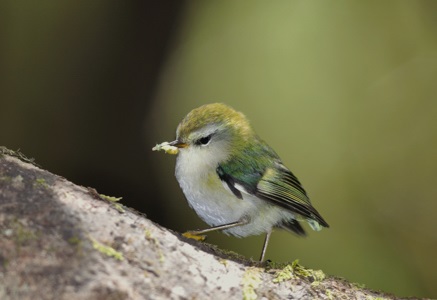
The project established a new population of the species on an almost predator-free island, Xinhua reported Monday citing New Zealand's Department of Conservation (DOC).
A DOC team had relocated 41 tiny alpine rock wrens from around Fiordland in the far southwest of New Zealand's South Island to Secretary Island from 2008 to 2011, and the number has grown to 66 in April, said a DOC statement.
"The increased safety of the island, a place where predators pose a lesser threat, provides insurance against the birds' steady demise on the mainland," DOC ranger Megan Willans said in the statement.
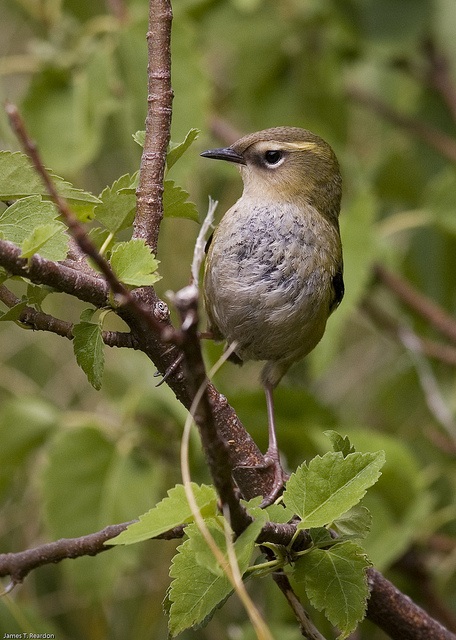
Of the 66 birds on the island, where the population of predatory stoats was tightly controlled, 63 had hatched and fledged there, indicating the birds have settled in well enough to breed.
The rock wren is the only true alpine bird in New Zealand and one of the most ancient bird species in the world.

They stem from a species present more than 80 million years ago and have no close structural resemblance to any other group of birds in the world.
Of the seven wren species that lived in New Zealand when humans arrived, the rock wren and the rifleman are the only two species surviving today.
Kashmir in autumn: A season of pleasure and plenty
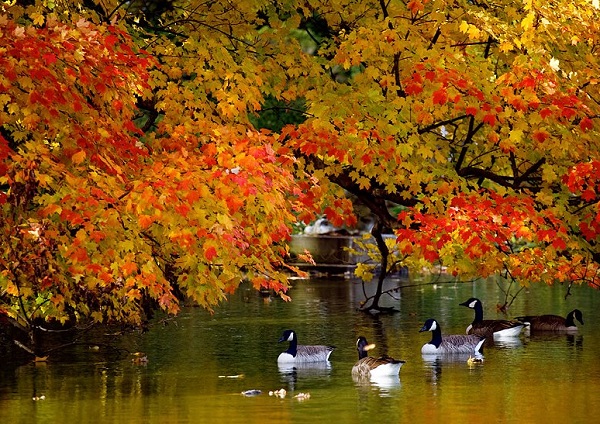
By Sheikh Qayoom
Srinagar, Sep 15 (IANS) Golden-brown rice fields, streams bringing down crystal-clear water from the mountains, cicada insects "singing" on willow treetrunks: these are the indicators of the breathtaking beauty and grandeur of the autumn in Kashmir.
As farmers in the countryside prepare to harvest paddy, trees laden with apples show signs that the fruit is waiting to be picked.
In the hilly areas, the maize crop and walnut trees are also maturing for the harvest.
"The cicada insect has a 17-year-long life-cycle and it is during the autumn months that it mounts the treetrunks to produce its particular sound before it lays its eggs.
"Kashmiris living in the villages and along wetlands where willow plantations abound are familiar with the sound produced by these insects. Autumn and singing of the cicada insects have always been synonymous in the Valley," said a local zoologist.
Besides apples, grapes, for which north Kashmir's Lar area in Ganderbal district is famous, are also picked in the beginning of the autumn season.
For anglers, Kashmir's mountain streams with trout are like a treasure trove during the autumn months.
"The water is so clean during the autumn season that one can angle for the whole day. Although trout is now being farmed in government and private hatcheries, the unparalleled taste of brown trout as well as the thrill of cathing one is something only an angler knows," Naseer Ahmad, an ardent devotee of the rod and tackle, told IANS.
Interestingly, trout was introduced in Kashmir by the British rulers early in the 19th century to address the nostalgia they felt for the fish. Finding the local climate and the habitat congenial to their growth and reproduction, trout has since spread to almost all the Valley's fast-moving mountain streams.
In fact, one of the major attractions for foreign anglers has been the high-quality brown trout found in Kashmir. For anglers, trekkers, watersports lovers and also for those who come to just lounge and relax, autumn is the best season to visit the Valley.
A nip in the mornings and evenings and the gentle warmth of the autumn sun are so refreshing that many visitors and locals wouldn't miss these for a fortune.
Towards the end of autumn in November, the chinar trees change their colour from green through crimson to yellow. It is a spellbinding spectacle that holds the viewer in awe as one stands before these majestic trees.
While some believe that the chinars were brought to Kashmir from Iran, others say they have been brought here from Greece.
One Persian visitor during yore is known to have exclaimed, "Che Nar" (What Fire!) after seeing the fiery leaves of the tree in autumn.
"If you are seeing a chinar tree for the first time in your life in autumn with crimson leaves you are bound to notice the 'fire' that the Persian visitor is believed to have referred to," Farooq Nazki, a noted local poet and broadcaster, told IANS.
And, as the autumn advances, thousands of migratory birds from far off Siberia, China, the Philippines and eastern Europe start arriving to spend the winter months in the local water bodies that host the avian visitors. For the well-being of the migratory birds Kashmir has a separate wildlife department that protects the local bird reserves from poaching and human interference.
Whichever way one looks at it, autumn is undoubtedly the king of the Valley's seasons. If you haven't been to Kashmir in autumn, you just don't know what you are missing.
India’s Valley of Flowers National Park - A UNESCO World Heritage Site
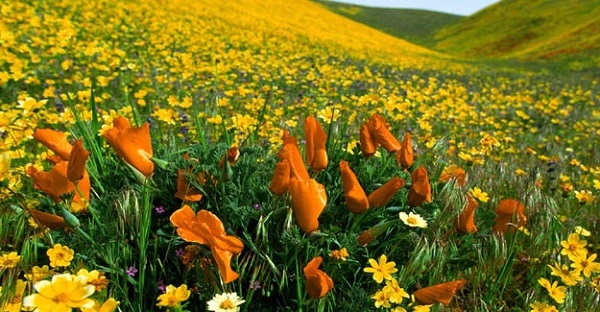
Nestled high in West Himalaya, India’s Valley of Flowers National Park is renowned for its meadows of endemic alpine flowers and outstanding natural beauty. This richly diverse area is also home to rare and endangered animals, including the Asiatic black bear, snow leopard, brown bear and blue sheep.
The Valley was introduced to the world as theValley of Flowers by Frank S, Smith - mountaineer, explorer, botanist who camped here for several weeks in the monsoon of 1937 and did valuable exploratory work. He authored a book called "The Valley of Flowers" which unveiled the beauty and floral splendours of the valley and thus threw open the doors of this verdant jewel to nature-enthusiasts all over the world.
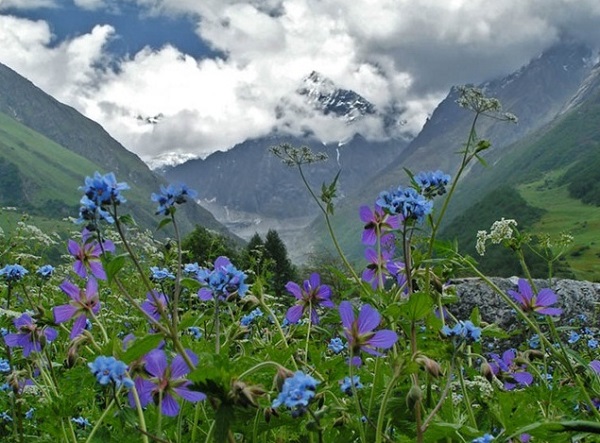
In 1939, Miss Margarate Legge, a botanist deputed by the botanical gardens of Edinburgh arrived at the valley for further studies. While she was traversing some rocky slopes to collect flowers, she slipped off and was lost for ever in the garden of the gods. Her sister later visited the valley and erected a memorial on the spot where she was buried by the locals. The
thoughtful memorial is still there and the lines inscribed on the marble slab read:
"I will lift mine eyes
unto the Hills
from whence cometh my strength"
Minisink Valley Nature Preserve - New Jersey
![]()
.jpg)
The preserve provides an important wildlife corridor connecting the Delaware Water Gap National Recreation Area with High Point State Park and other protected lands, and includes forested areas as well as wetlands along Clove Brook, which feeds the Delaware River via the Neversink River.
“The upper Delaware Basin is a globally important resource, providing habitat for thousands of migrating birds as well as fish, mussels, rare plants and the millions of people who count on this river system for clean, safe drinking water,” said Robert Allen, Director of Conservation Programs for The Nature Conservancy in New Jersey.
.jpg)
The property is located on the Western side of Kittatinny Ridge, a globally important area for migratory birds of prey. Golden eagles, kestrels and hawks are often seen along the ridge. Recently, peregrine falcons have also begun nesting on federal property in the area, fledging chicks successfully on Kittatinny Ridge for the first time in a half-century.
The ridge is also critical for migrating songbirds, including the cerulean warbler — one of the fastest-declining songbirds worldwide, which is known to breed in the Minisink area. The golden-winged warbler, Acadian flycatcher, Louisiana water thrush and Eastern wood-peewee also breed in the region, making it a popular destination for birders.
- Ranji Trophy's 2019-20 Best All-Rounder Player Manishankar Murasingh Appointed as TTAADC Brand Ambassador
- Tripura Govt ‘Discussing’ Over High Court’s Recent Verdict Against Fixed Pay System: CM cites ‘Limited Resources’
- Tripura Opposition Leader To Spend His MLA Fund for Bodh Vihar Community Hall Inauguration
- Drunk & Drive Injured Many in Bisharamganj
- Fire Engulfed Anganwadi Center in Melaghar






.jpg)


